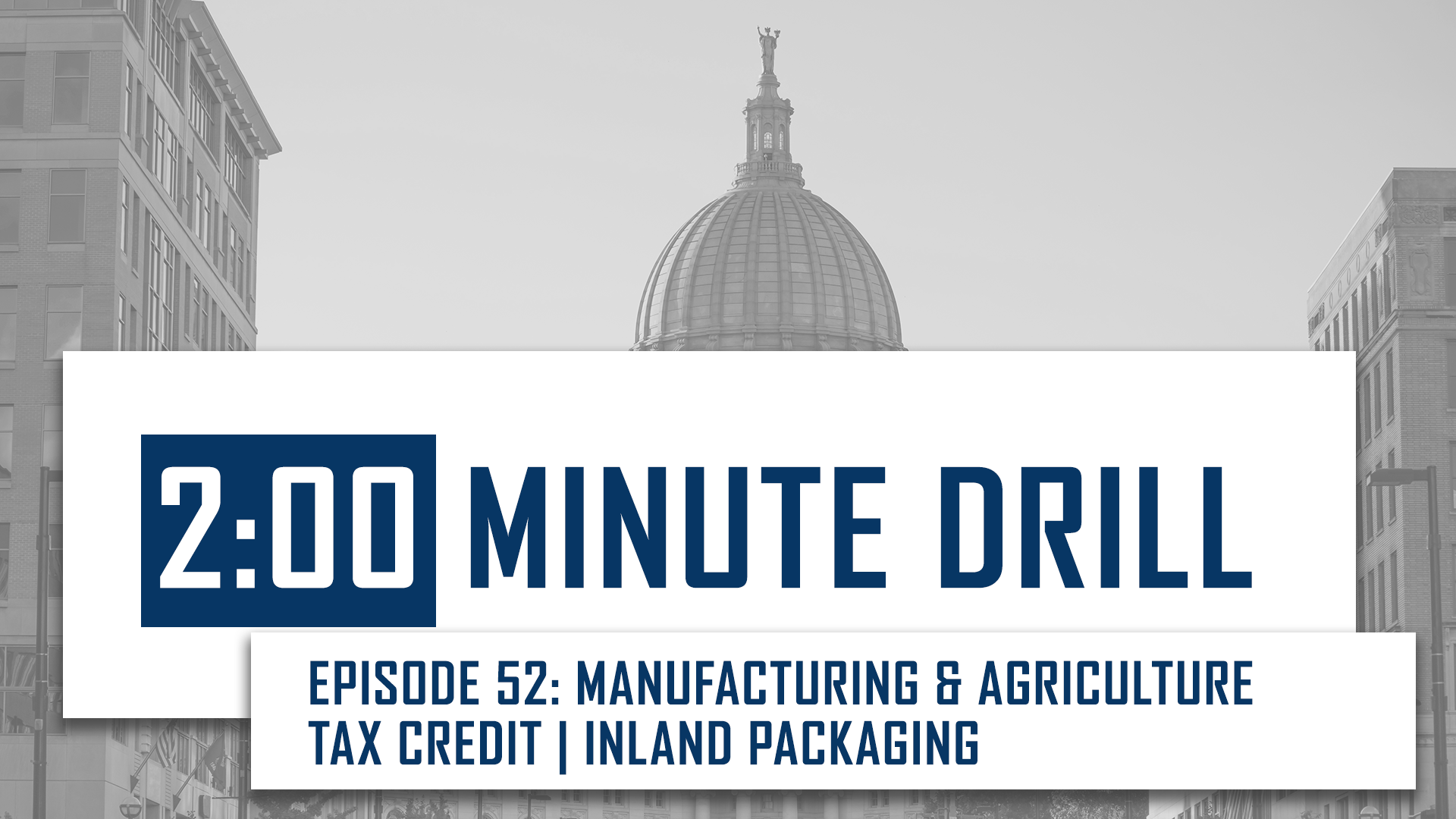By Jason Culotta
Senior Director of Government Relations
Wisconsin Manufacturers & Commerce
In early 2011, policymakers wanted to take significant action that would encourage job growth in Wisconsin but were uncomfortable with the idea prevalent in many states of offering huge incentives to large businesses to lure them in. The concept of a credit to encourage production in the state was an agreeable alternative that complemented the state’s top two industries, manufacturing and agriculture.
Recent attention has been given to the full implementation of the Manufacturing and Agriculture Credit (MAC) this year, some casting doubt on the credit’s value. Since the MAC was adopted in 2011, Wisconsin manufacturing jobs have grown by over 34,000 while manufacturers were expected to have saved about $100 million by claiming the credit in 2014.
The MAC was adopted during the 2011 state budget process and began to partially take effect in 2013. It can be claimed on production that occurs in Wisconsin and may offset the income tax liability of a manufacturing or agricultural producer.
Potential claimants include traditional C-corporations that pay corporate income taxes and also “pass-through” entities like LLCs and S-corporations (where the partners or members of the company are allocated both earnings and tax liability) which pay personal income taxes.
Now fully implemented for 2016 and beyond, the credit may be claimed on 7.5 percent of the state’s flat 7.9 percent corporate income tax rate or the top personal income tax bracket of 7.65 percent, yielding an effective rate of 0.4 percent or 0.15 percent, respectively, for manufacturers or farmers who produce in Wisconsin.
Other states are also acting to lower the tax burden on manufacturers, with Gov. Andrew Cuomo (D-New York) eliminating corporate income taxes on manufacturers and Indiana repeatedly reducing the personal income tax to a rate of just 3.3 percent this year (for all payers).
We at WMC are aware of multi-state companies consolidating operations that chose to maintain and expand in-state due to the MAC as well as local businesses that choose to expand here – and not elsewhere – for the same reason. The economic impact of these decisions can only be quantified after employment and revenue numbers are formally reported.
Has there been a tangible impact on jobs? Absolutely!
According to the U.S. Bureau of Labor Statistics, Wisconsin manufacturing employed 505,400 people in January 2006 but dropped to just 423,600 in January 2010. During May 2016, 471,400 Wisconsinites worked in manufacturing, an increase of 34,000 since the credit was enacted in 2011. Interestingly, Indiana and Wisconsin are the only two states with more employees in manufacturing than government.
What has the cost of the credit been?
As of February 2016 (the most recent data available), the state Department of Revenue reported there are 9,200 manufacturers in the state. About 5,000 claimed the MAC in 2013 (the first year it began to phase-in) yielding about $50 million of relief. The amount of relief is projected to roughly double for 2014. The final date for 2014 data to be reported is in September 2016, so complete information on the credit’s value will not be available until then.
Of course, earnings are not the only activity on which businesses are assessed. With some exceptions, levies are applied to sales, real property (buildings and land) and personal property (moveable items), as well as unemployment insurance.
A Midwest site selector who is a fan of the MAC recently told me the real value of the credit is in the income tax collections derived from those employed by businesses claiming it.
As employment rebounds, the MAC, along with other recently enacted pro-growth policies, is having the intended effect of sourcing production – and jobs – to Wisconsin.
*This article appears in the July edition of the WMC Wisconsin Business Voice magazine.





